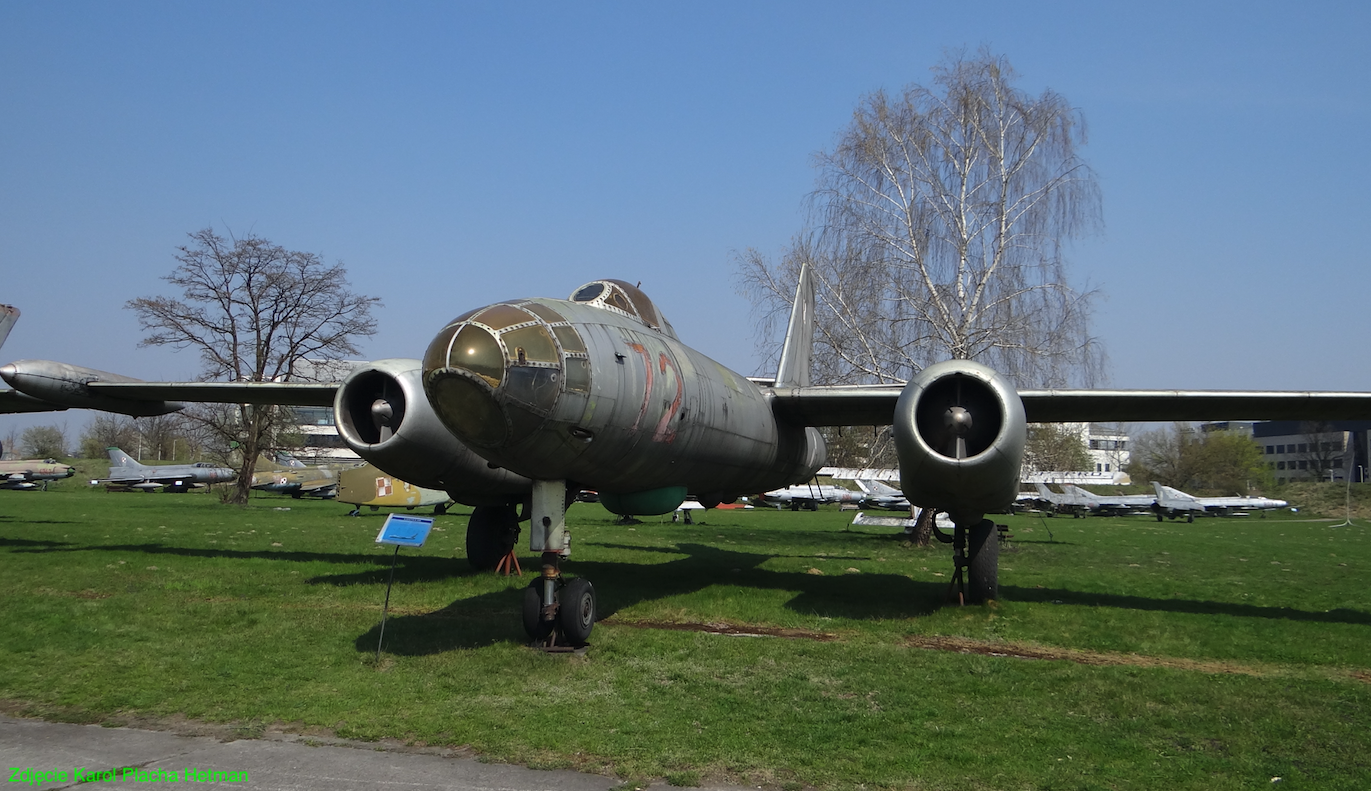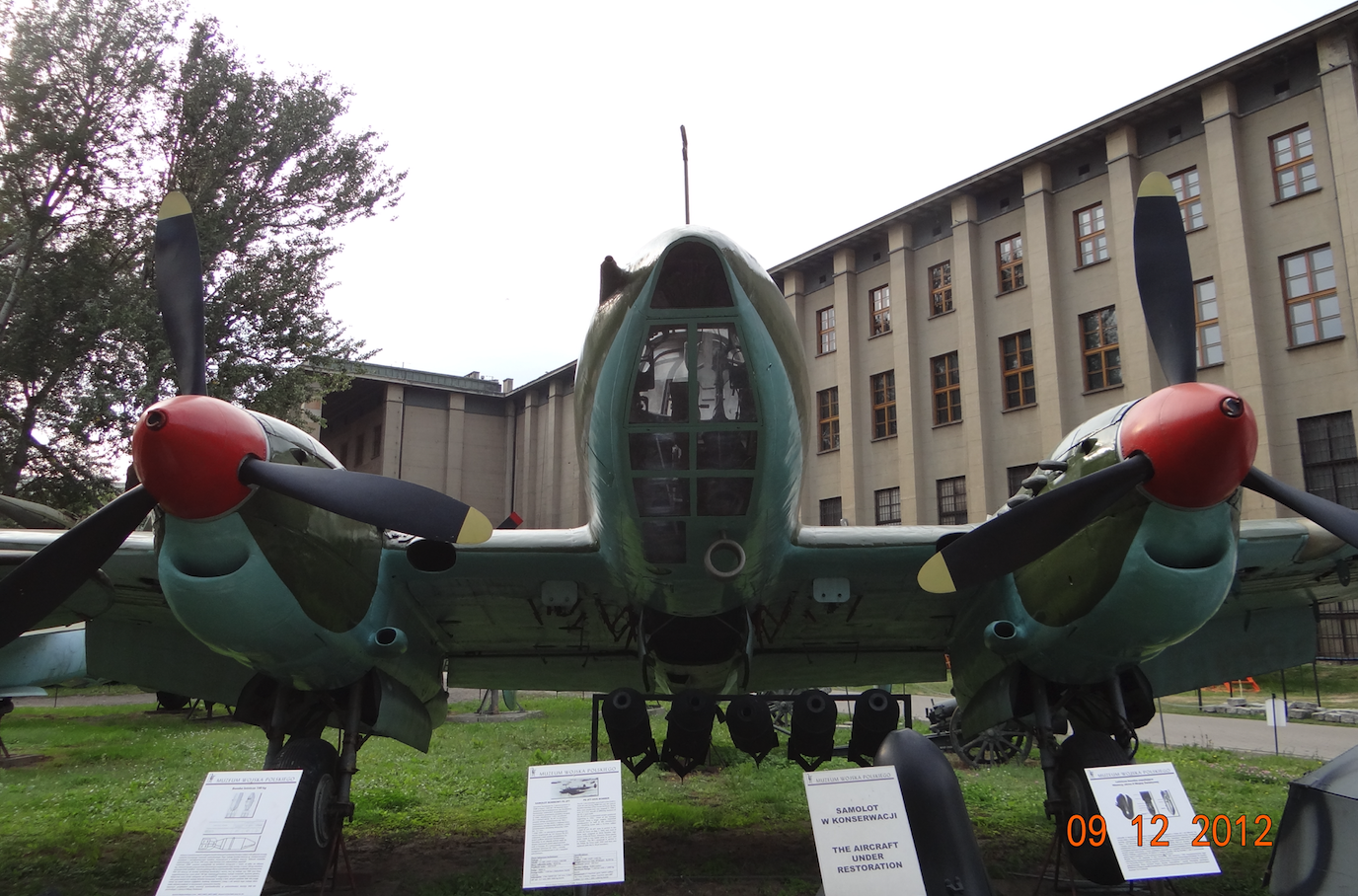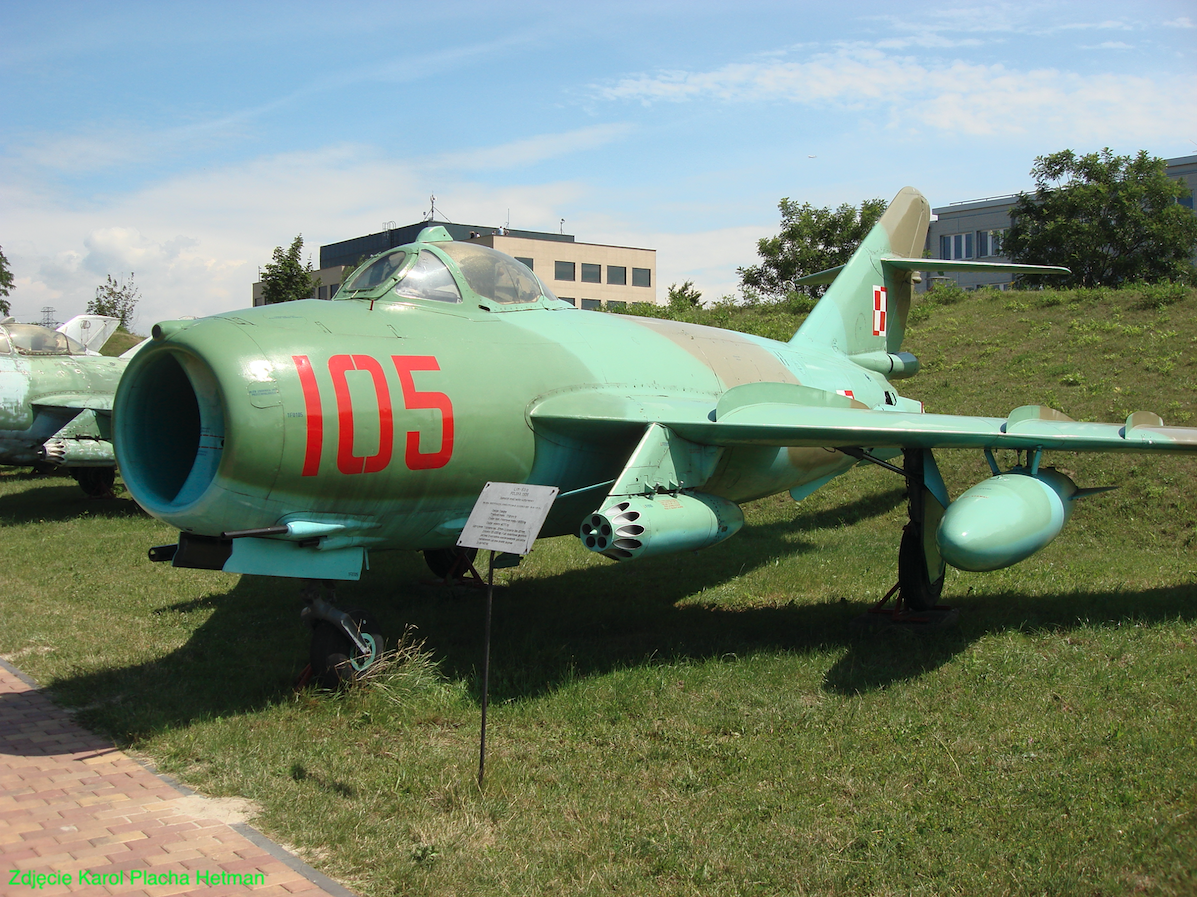Sochaczew 2008-01-15.
21st Reconnaissance Aviation Regiment, in Ławica and Sochaczew.
21st Reconnaissance Aviation Regiment.
21st Independent Reconnaissance Aviation Regiment.
21st Tactical Reconnaissance Aviation Regiment.
21st Tactical Reconnaissance and Artillery Aviation Regiment.
21st Bomber and Reconnaissance Aviation Regiment, in Sochaczew and Powidz.
1951 – 1986.


History of the 21st PLRT.
The Polish Army has always attached great importance to air reconnaissance. In the initial period, after the end of World War II, the role of reconnaissance planes was played by Petlakov Pe-2 bombers, and from 1949, also by Tupolev Tu-2 bombers. But the need to have typically reconnaissance aircraft, which could not only perform their tasks using visual observation, but also using photographic and other equipment, was urgent.


Pursuant to Order No. 0036/Org. of the Ministry of National Defense on April 7, 1951, the 21st Reconnaissance Aviation Regiment was formed as JW. The 1295th Regiment was organized at the Ławica-Poznań airport on the basis of the Reconnaissance Aviation Squadron. In May 1954, the regiment was transferred to the Bielice airport near Sochaczew.
Pursuant to Order No. 0310/Org. Chief of the General Staff of the Polish Army on December 18, 1954, the unit was named the 21st Reconnaissance Aviation Regiment. However, the following year, pursuant to Order No. 0260/Org. Chief of the General Staff of the Polish Army on November 29, 955, the name was changed to the 21st Independent Reconnaissance Aviation Regiment. This was due to the fact that the Regiment did not report to any division or corps, but directly to the General Staff of the Polish Army. And this arrangement did not last long, because in 1957, the Regiment was subordinated to the commander of Operational Aviation.
In 1959, the Regiment received a banner funded by the State Council. In 1960, the Regiment had four squadrons. Two close reconnaissance squadrons and two long reconnaissance squadrons. The former were equipped with Lim-2 planes. The latter were Il-28 and Il-28 R aircraft. On July 7, 1960, the regiment received the first Lim-5 R aircraft, No. 1C-1712, equipped with an AFA-39 camera. In July 1960, on the occasion of the celebration of the victory at Grunwald, the regiment fielded 4 Lim-2 planes in the parade, which assisted the Il-28 bomber from Powidz.
Already in 1963, further changes took place. On April 13, 1963, the unit was reorganized and its name was changed to the 21st Tactical Reconnaissance Aviation Regiment. This happened on the basis of the Order of the Commander of the Air Force No. 030/Org. of April 12, 1963. These changes were related to the establishment of another reconnaissance unit at the Sochaczew airport in the form of the 32nd Artillery Reconnaissance Aviation Regiment.
New Lim-6 bis R planes, 1964 year.
At the beginning of 1964, new aviation technology was introduced to the 21st PLRT in the form of modern Lim-6 bis R attack and reconnaissance planes. The planes belonged to the third production series. In this series, some of the planes were made as attack planes, and some as attack and reconnaissance planes, and these planes were sent to the 21st PLRT.

On January 6, 1964, 3 Lim-6 bis aircraft no. were received in Sochaczew; 1J 06-01 / 601, 1J 06-02 / 602, 1J 06-04 / 604. On January 16, 1964, 7 Lim-6 bis R no. was adopted; 1J 06-05 / 605, 1J 06-06 / 606, 1J 06-07 / 607, 1J 06-08 / 608, 1J 06-09 / 609, 1J 06-11 / 611, 1J 06-14 / 614. W On March 6, 1964, the regiment adopted 2 Lim-6 bis R no.; 1J 06-37/637, 1J 06-38/638. On March 13, 1964, another 2 lim-6 bis R no.; 1J 06-35 / 635, 1J 06-36 / 636. In total, the Regiment received 14 assault and reconnaissance machines.
At the beginning of the 1970s, the 21st PLRT additionally received at least three Lim-6 MR attack and reconnaissance aircraft no. 1D 01-01 / 101, 1D 05-23 / 523, 1D 06-18 / 618. These were Lim-5 P aircraft rebuilt to the Lim-6 bis standard at LZR-2 in Bydgoszcz.
Further changes in the Regiment.
In April 1968, organizational changes took place once again. The regiment was reformed and renamed the 21st Tactical Reconnaissance and Artillery Aviation Regiment. This was done pursuant to the Order of the Air Force Commander No. 015/Org. Of April 16, 1968. In January 1969, the Regiment was transferred to the airport in Powidz. In 1982, the unit was reformed once again and renamed the 21st Bomber-Reconnaissance Aviation Regiment.
De-moulding. 1986.
Pursuant to Order No. 017/Org. Commander of the Air Force on October 3, 1986, the Regiment was disbanded by December 31, 1986. But on the basis of this Regiment, the 3rd Squadron was formed in the 7th Bomber and Reconnaissance Aviation Regiment.
Regiment Commanders:
Major pilot Andrei Dubovoi (1951-1955). Colonel pilot Aleksander Milart (1955-1963). Lieutenant Colonel pilot Michał Polech (1963-1967). Lieutenant Colonel pilot Leopold Pacek (1967-1971). Lieutenant Colonel pilot Adam Mąkosa (1971-1975). Colonel pilot Zbigniew Jędrzejewski (1975-1979). Lieutenant Colonel pilot Wiktor Frankiewicz (1979-1983). Lieutenant Colonel pilot Janusz Konieczny (1983-1986). Captain navigator Andrzej Pająk (1986).
Aircraft used 21st PLRT;
Il-28, Il-28 R, Lim-1, Lim-2, Lim-5, Lim-5 R, Lim-6 bis R.
Written by Karol Placha Hetman
